Pangasius farming in the Philippines has emerged as a promising venture for those seeking profitable aquaculture opportunities. Delving into the world of cultivating Pangasius promises financial gains and contributes to the country’s aquatic ecosystem. This blog will explore the essential techniques and considerations to successfully culture Pangasius fish, shedding light on the pathway to sustainable and lucrative aquaculture endeavors.
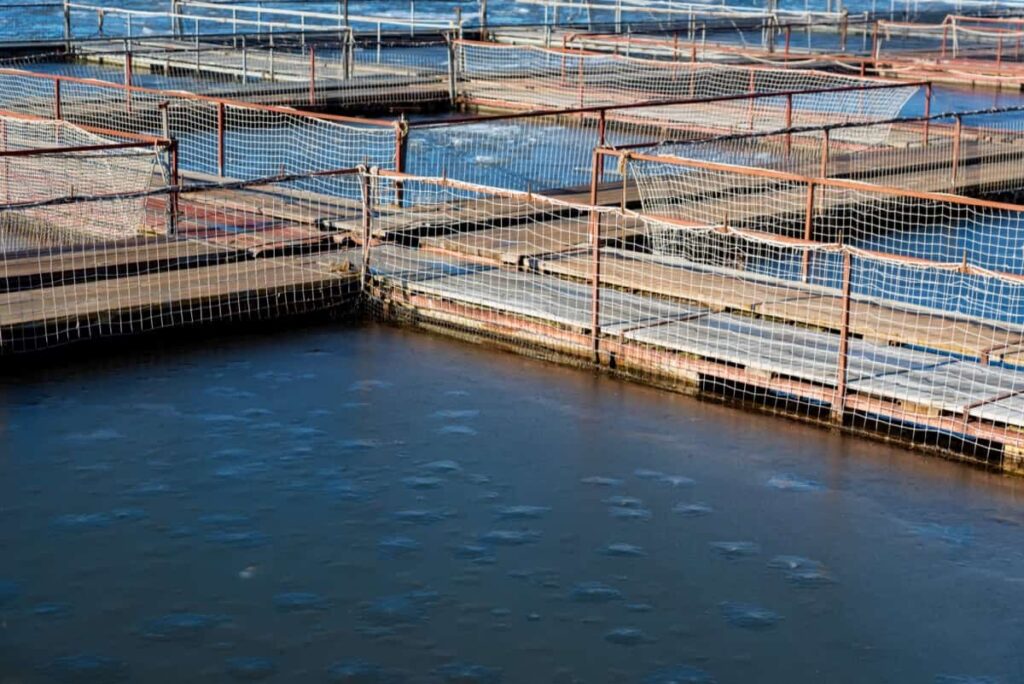
What is Pangasius Farming?
Pangasius farming, also known as catfish farming, involves cultivating freshwater fish called Pangasius hypophthalmus. These fish are widely farmed due to their rapid growth and adaptability to various environments. In aquaculture, Pangasius are raised in controlled ponds or tanks. They are fed a balanced diet, typically pellets, to support their growth. Pangasius farming contributes significantly to the global seafood market, particularly in regions like the Philippines.
Pangasius Farming Techniques in the Philippines
Pangasius farming, a burgeoning practice across Asia, has found its foothold in the Philippines, albeit a novel endeavor. While Pangasius is considered a pest in Laguna Lake and Taal Lake, its potential for profitability emerges when harnessed through aquaculture, serving as valuable livestock feed due to its protein-rich composition. At its core, Pangasius farming involves cultivating this freshwater fish species.
Originating from the Mekong River in Southeast Asia, it boasts various monikers like Vietnamese River Cobbler, Swai, or Tra. Rising demand has propelled Pangasius farming’s popularity, especially given its firm, white flesh that graces dishes like fishcakes and curries. Engaging in Pangasius farming unfolds as a multi-step process. Juvenile fish are nurtured in ponds or cages and later transferred to larger tanks or ponds for substantial growth.
In case you missed it: Unlocking the Potential Of Sustainable Aquaculture: How to Start and What You Need to Know
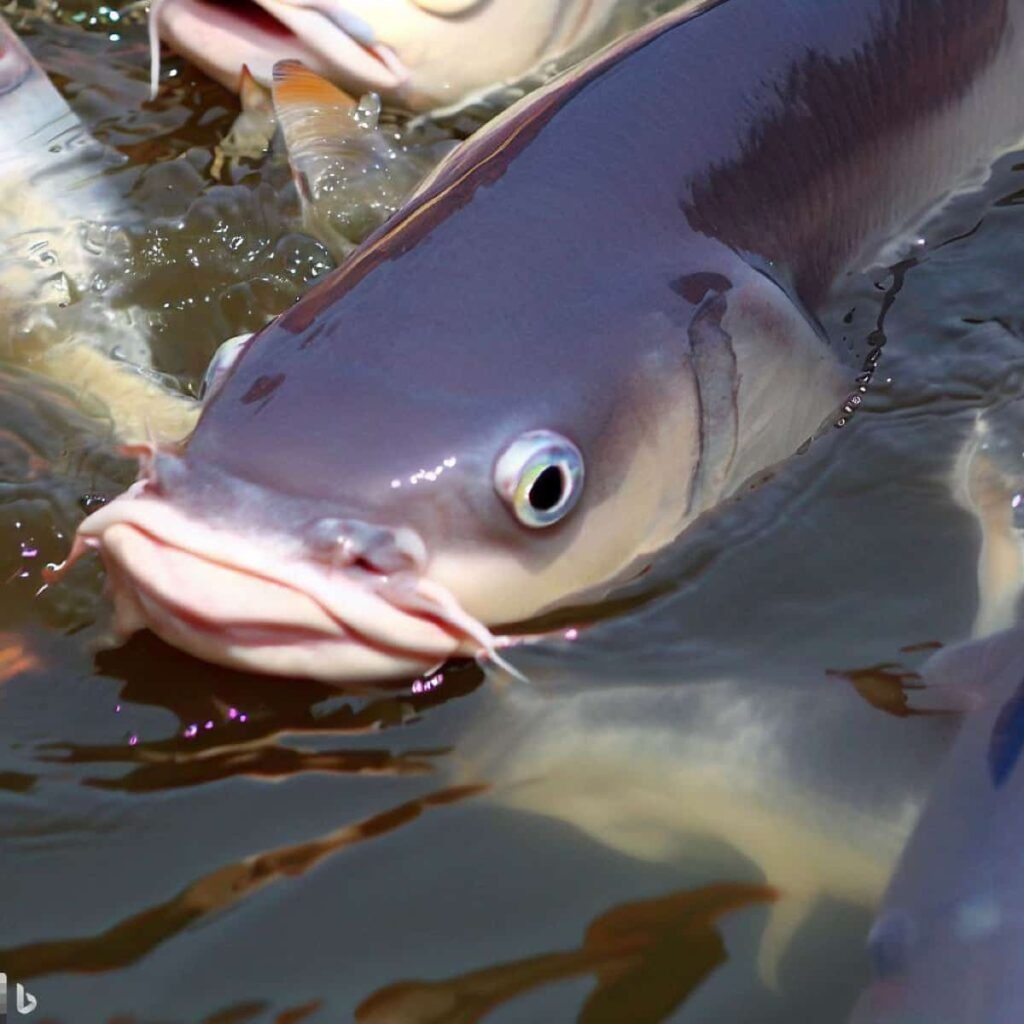
Their diet ranges from live foods like artemia and daphnia to specially prepared feeds. Remarkably swift growers, Pangasius can pack up to 4 kgs in 12-18 months. Successful Pangasius farming hinges on astute management. Diligent oversight of stocking densities, feeding regimens, water quality, and other variables underpins optimal yield. Vigilance against diseases is paramount, necessitating robust biosecurity measures to avert potential outbreaks.
Step-by-step Guide for Pangasius Farming in the Philippines
- Site Selection: Opt for a water source without pollution, disturbances, and poachers. Ensure access to a reliable source of electricity.
- Size of Culture System: The ideal size ranges from 1,600 to 2,400 sqm for ponds, with a water depth of 1.5-2 meters. Cages should be around 10×10 meters with a depth of 5 meters. Stocking density for cages ranges from 15-50/m3.
- Pond Preparation: Drain and sun-dry ponds to eliminate unwanted fish species and condition the environment. Repair dikes and gates to prevent entry and escape of stocks. Remove predatory fish species to enhance yield. Lime the pond to condition the soil for pH tolerance (6.5-7.5).
- Water Filling and Stocking: Fill the pond 1.5-2 meters deep to create an optimal environment. Stock Pangasius at 3-15 pcs/m2 for an 80-90% survival rate.
- Pond Management: Feed Pangasius with kitchen waste, rice bran, or pellets (2.5% of ABW) for growth and quality. Monitor water parameters (pH, DO, temperature, salinity) to ensure ideal conditions. Conduct regular sampling to track growth and feeding requirements.
- Harvesting: Harvest selectively or entirely after 5-6 months of culture. Achieve 1-1.5 kg weight through proper pond management.
Best Practices for Pangasius Farming in the Philippines
- Site Selection: Choose a suitable location with ample water supply and proper drainage to avoid water stagnation and ensure healthy fish growth.
- Water Quality Management: Regularly monitor and maintain water quality such as temperature, oxygen levels, pH, and ammonia concentration. Clean and aerate the water to support optimal fish health.
- Stocking Density: Avoid overcrowding by adhering to recommended stocking densities. This prevents stress and disease outbreaks and promotes uniform growth.
- Feeding Regimen: Provide balanced and nutritious diets using high-quality pellets. Adjust feeding frequency and quantity as the fish grow, ensuring efficient utilization and minimal waste.
- Health Management: Implement strict biosecurity measures to prevent the spread of diseases. Quarantine fish before introducing them to the main population.
- Harvesting Techniques: Employ humane and efficient harvesting methods to minimize stress and maintain fish quality. Avoid sudden changes in water conditions during harvesting.
In case you missed it: Sikkim Organic Farming: For Vegetables, Herbs, Fruits, Millets, Crops, Livestock, and Aquaculture
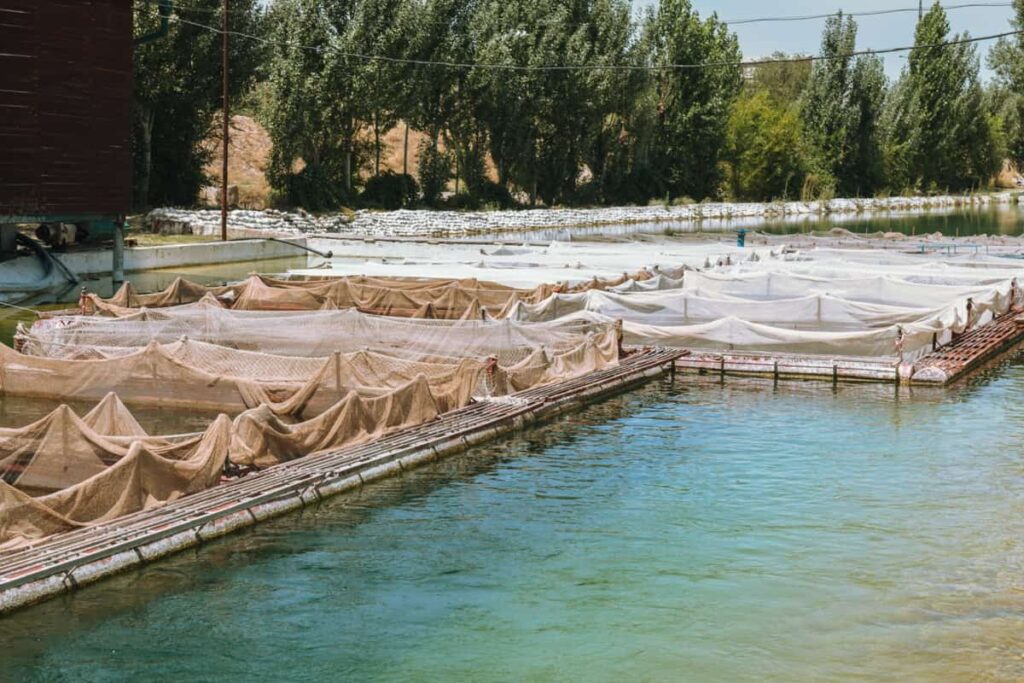
Pangasius Farming Equipment and Supplies in the Philippines
- Pond or Cage Structures: Establish suitable ponds or cages for cultivating Pangasius. Mesh cages made of wire are recommended for cage farming.
- Aeration Systems: Install aeration systems in ponds or cages to ensure sufficient oxygen levels in the water, promoting healthy fish growth.
- Water Quality Monitoring Tools: Equip yourself with tools to monitor water parameters such as temperature, pH, ammonia levels, and oxygen content to maintain optimal conditions.
- Feeding Equipment: Provide automatic feeders for efficient and consistent feeding. Quality pellets made from grains and soybeans are essential for the fish’s nutrition.
- Thermometers: Use accurate thermometers to monitor and maintain water temperature within the ideal range of 24-28 degrees Celsius.
- Fingerlings: Source high-quality fingerlings from hatcheries or established farmers to kick-start your farming venture.
- Nets and Harvesting Equipment: Employ appropriate nets and harvesting equipment to ensure gentle and stress-free fish collection during harvest.
- Biosecurity Measures: Invest in tools like disinfectants, quarantine tanks, and protective gear to prevent disease outbreaks.
- Record-Keeping Tools: Maintain accurate records of stocking, feeding, and growth rates for effective farm management.
- Water Testing Kits: Have water testing kits on hand to regularly assess water quality and make necessary adjustments.
Pangasius Farming Profitability in the Philippines
Philippines involves a strategic grasp of the market and adept pricing approaches. The market dynamics, encompassing factors like global demand, production costs, exchange rates, and climatic fluctuations, can sway the pricing of Pangasius. Savvy decision-making in pricing and marketing hinges on this knowledge.
For instance, a higher pricing strategy might be reasonable if demand and production costs surge. Conversely, lower pricing while securing profit becomes feasible if your production costs undercut rivals. Vigilance over currency exchange rates amplifies pricing precision across diverse markets. Environmental vagaries like droughts in Vietnam, a Pangasius production hub, can sway prices too. Drought-induced scarcity might drive prices upwards.
- Strategic Location: Select a locale aligning with Pangasius preferences, boasting temperatures around 26-28 degrees Celsius and spacious quarters.
- Tailored Nutrition: Choose appropriate fish feed types by researching to cater to your Pangasius’ specific requirements.
- Health Management: Regular veterinary check-ups ensure swift identification and treatment of health issues, safeguarding fish welfare.
- Efficient Workforce: Acknowledge that Pangasius farming demands a labor-intensive effort. Employing a proficient and trained workforce is essential for task execution efficiency.
Sustainable Pangasius Farming Methods in the Philippines
- Water Management: Implement efficient water usage and treatment techniques to conserve this vital resource and maintain water quality.
- Nutrient Recycling: Employ systems that reuse waste nutrients for plant growth, reducing environmental impact.
- Integrated Farming: Combine Pangasius farming with other activities like aquaponics or poultry to optimize resource utilization.
- Natural Feeds: Explore alternative feed sources like insects or aquatic plants, minimizing dependency on external resources.
- Polyculture: Introduce diverse species to ponds or cages, promoting a balanced ecosystem and reducing disease risks.
- Ecosystem Conservation: Preserve adjacent habitats, wetlands, and waterways, contributing to biodiversity and water regulation.
- Efficient Energy Use: Employ energy-efficient technologies and practices, reducing carbon footprint.
- Selective Breeding: Develop strains of Pangasius that exhibit disease resistance and efficient growth, enhancing overall sustainability.
- Community Engagement: Involve local communities in farming practices, promoting awareness and shared responsibility.
- Certification: Seek certifications like GlobalG.A.P. for adhering to sustainable farming standards and enhancing market access.
In case you missed it: Grouper Fish Farming Business Plan: Ultimate Guide to Breeding and Reproduction Techniques
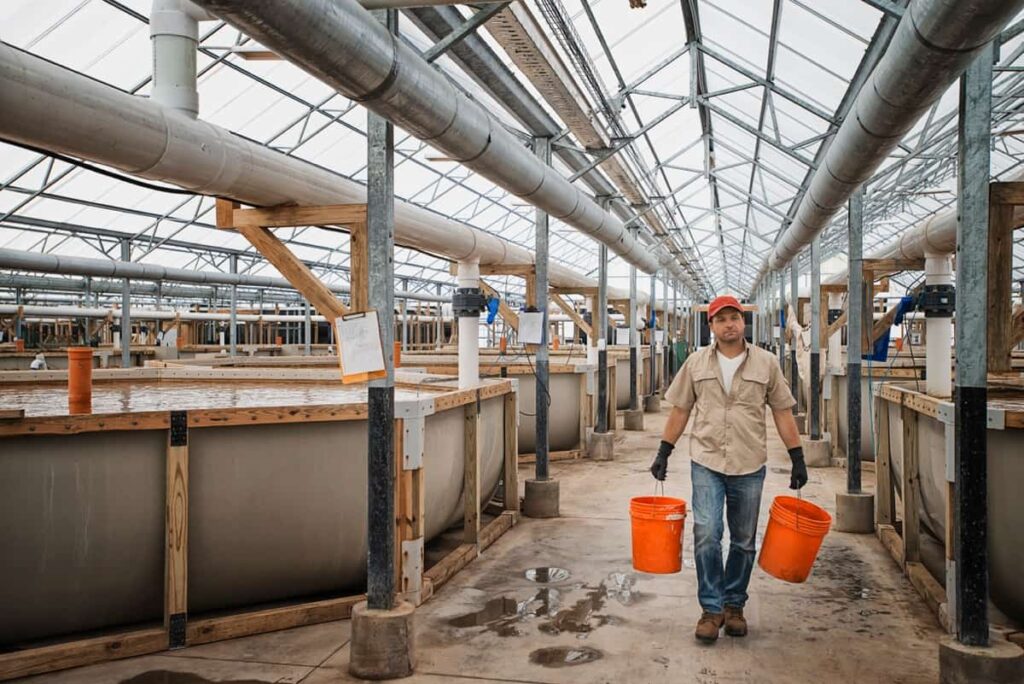
Pangasius Feed and Nutrition Requirements in the Philippines
Pangasius farming involves high-density stocking in ponds and cages for 6-8 months, yielding 1kg harvest weight. Both genders grow similarly, reproducing at 26-28°C. Spawning occurs from February to October, with sexual maturity around 3-3.5 years. Females lay up to 80,000 eggs/kg, fostering multiple spawns. Pond production yields 250-300mt/ha, remarkably surpassing other aquaculture species. Cages in impoundments have 100-150 fish/m3 densities, yielding 100-120kg/m3.
Floating cages bolster water exchange, permitting higher densities. Pangasius is exported as skinless, boneless fillets, with flesh color influenced by feed, processing, and environment. Sustainable by-products find use in fishmeal, bio-diesel, cosmetics, and value-added products. While Pangasius culture addresses environmental concerns, fry collection impact is mitigated by home spawning methods and regulatory constraints on wild stock collection.
Disease Management in Pangasius Farming in the Philippines
Common diseases include bacterial infections like Aeromonas and Streptococcus and parasites like Ichthyophthirius multifiliis. Effective management involves maintaining good water quality, ensuring proper nutrition, and implementing biosecurity measures. Quarantine protocols for new fish, regular health monitoring, and swift treatment using approved medications are crucial. Enhancing fish immunity through optimal nutrition and stress reduction aids disease prevention.
Water Quality Management for Pangasius Farming in the Philippines
- High Stocking Densities: Pangasius is stocked densely (60-80 fish/m2) in ponds and cages, necessitating vigilant water quality management.
- Growth Duration: Grown for 6-8 months, Pangasius reaches 1kg harvest weight, emphasizing prolonged exposure to water conditions.
- Reproduction Conditions: Both genders grow similarly, with a reproduction temperature of 26-28°C, aligning with successful spawning.
- Spawning Period: February to October marks the spawning period, with sexual maturity achieved at 3-3.5 years.
- High Fecundity: Female Pangasius can lay up to 80,000 eggs/kg, enabling multiple spawns, necessitating optimal water conditions.
- Pond and Cage Yields: Pond production yields 250-300mt/ha, significantly surpassing other aquaculture species. Cages achieve 100-120kg/m3 yields, aided by floating cage systems.
- Flesh Color Variation: Exported as fillets, flesh color varies based on feed, processing, and environment. White fillets stem from floating feeds and good water quality, while yellow flesh is linked to non-commercial or natural food sources.
- Sustainable By-Products: Pangasius by-products find use in fishmeal, bio-diesel, cosmetics, and value-added products, enhancing sustainability.
Market Demand and Trends for Pangasius in the Philippines
Pangasius fish farming involves rearing in ponds and cages at high densities (60-80 fish/m2) for 6-8 months until reaching around 1kg harvest weight. Males and females grow equally, with a 26-28°C reproduction temperature. Feed primarily consists of rice bran and trash fish, but alternative sources like soybean, corn, and meat bone meal are also used.
In case you missed it: From Water Quality to Feeding Habits: A Comprehensive Guide to Successful Fishpond Management
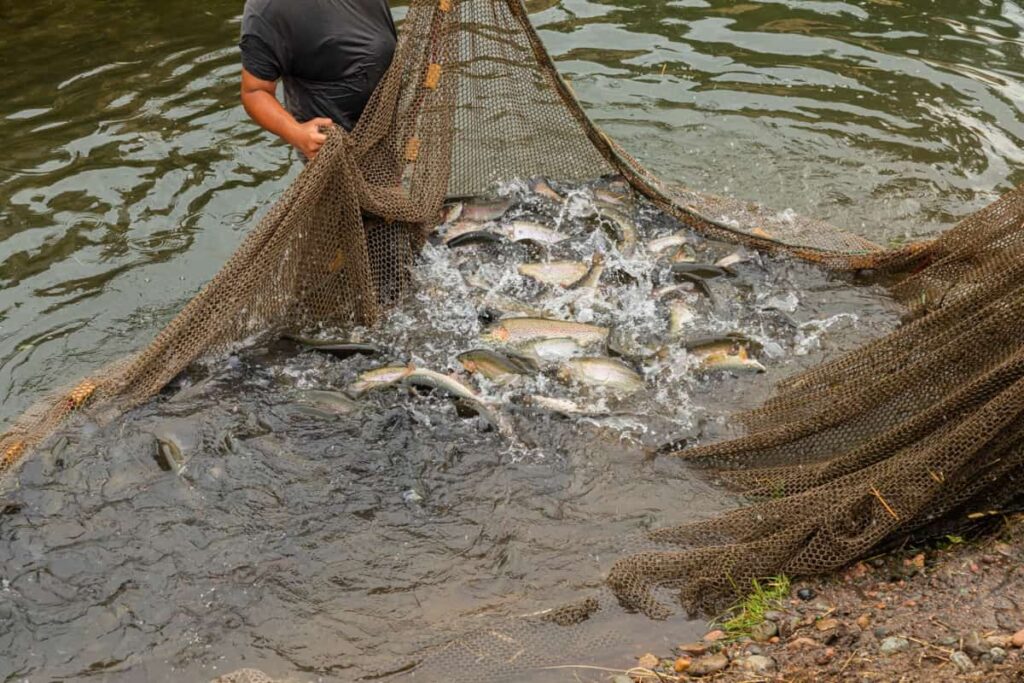
Pangasius has a rapid growth rate and can live up to 20 years in the wild, reaching about 10-12cm in length and 14-15g in weight in 2 months. In India, Pangasius can reach 1-1.5 kg in one year, yielding 10-15 tons/hectare. Like tilapia, Pangasius adapts well to different farming systems and can be consumed daily as a healthy choice, rich in Omega-3 and protein.
Pangasius Processing and Value-added Products in the Philippines
Pangasius processing in the Philippines involves various stages, such as filleting, freezing, and packaging. The fish’s medium firm fine-grained texture and mild flavor make it suitable for value-added products like fish fillet, smoked fish, fish sausages, and fish balls. These products offer nutritional benefits, rich in protein and Omega-3 fatty acids. Pangasius processing employs modern techniques to ensure quality and safety, aligning with scientific practices to meet consumer demand for diverse, convenient, and nutritious seafood options.
Government Regulations and Permits for Pangasius Farming in the Philippines
The policy emphasizes environmentally sound practices to ensure sustainable industry development. The terms are defined, including certification, containment pond, effluent, and more. Pangasius is categorized as a low-risk species suitable for freshwater aquaculture. Site selection, farm design, and construction follow FAO standards, considering water quality, climate records, and environmental impact mitigation.
Practices for increased production and feed management are outlined, encouraging optimal stocking densities, the use of healthy fry, and efficient feed utilization. Biosecurity standards for hatcheries are set to prevent accidental release of eggs/fry into natural waterways.
Pangasius Export Opportunities from the Philippines
Due to its increasing global demand, the Philippines has export opportunities for Pangasius fish. Examples of export destinations include the United States and Europe, where Pangasius fillets are popular for their affordability and mild flavor. The Philippines’ proximity to these markets gives it a competitive advantage. Pangasius is versatile and suitable for various value-added products like fillets, fishmeal, and cosmetics. It offers diverse export avenues, contributing to the country’s economic growth and trade expansion.
Pangasius Hatcheries and Breeding Programs in the Philippines
Pangasius hatcheries in the Philippines are specialized facilities focused on breeding and producing high-quality Pangasius fry and fingerlings for aquaculture purposes. These hatcheries employ controlled environments and carefully managed conditions to ensure successful reproduction and early growth.
Breeding programs involve selecting broodstock with desirable traits, such as growth rate and disease resistance. The breeding process includes inducing spawning, collecting and fertilizing eggs, and rearing larvae until they become fry. These fry are then sold to Pangasius farmers for grow-out in ponds or cages.
Comparative Analysis of Pangasius Farming vs. Other Aquaculture Practices in the Philippines
Pangasius exhibits rapid growth rates, reaching marketable size in 6-8 months, yielding 250-300 mt/ha in ponds and 100-120 kg/m3 in cages. This surpasses other species. Pangasius also adapts to varied feeding regimes, including low-cost options like rice bran and kitchen waste.
In case you missed it: Project Report of Pangasius Fish Farming: Cultivation Economics, Production Cost, and Profit Analysis
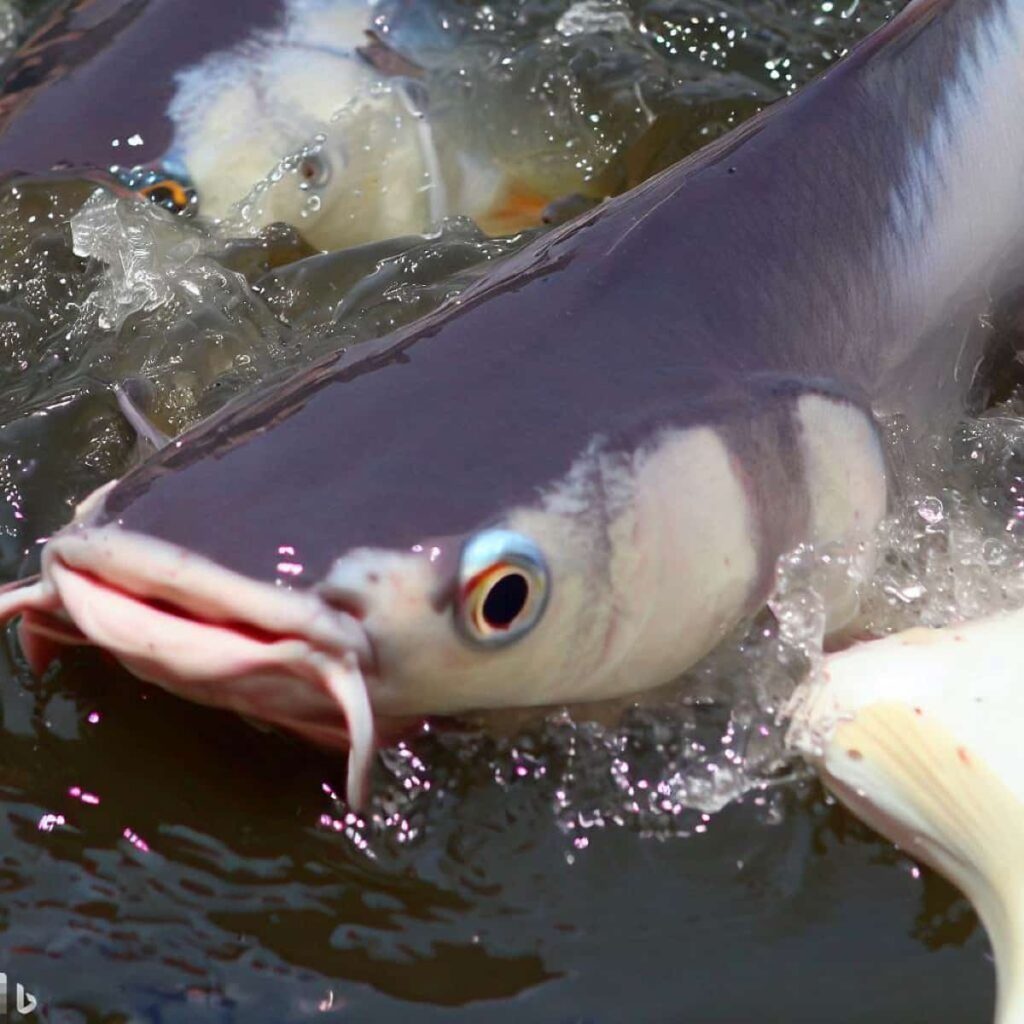
Furthermore, its export potential as skinless fillets open global markets. However, environmental concerns like fry collection impact need addressing. Overall, Pangasius farming showcases economic viability, shorter production cycles, and favorable consumption traits compared to other aquaculture species.
Conclusion
Pangasius farming in the Philippines offers a promising avenue for profitable aquaculture. With its rapid growth, adaptability to various feeds, and export potential, Pangasius presents an opportunity for farmers to cultivate a sustainable and economically viable source of income in the aquaculture industry.
- Broccoli Varieties: Choosing the Right Cultivars for Your Farm
- How to Raise Pigs in Your Own Backyard: A Comprehensive Guide
- Budget Friendly Sheep Shed Ideas: Cheap and Low-Cost Tips
- How Much Do Cattle Farmers Make: Revenue Streams in Cattle Farming
- Management Pests and Diseases in Your Cotton Field
- Sheep Farming Business Plan for Beginners
- Aquaponic Farming at Home: A Step-By-Step Guide
- Profitable Village Farming Business Ideas in 2024
- High-Yield Aquaculture: Fast-Growing Fish for Farming
- Effective Fish Pond Construction Techniques for Beginners
- Irrigation and Water Management in Pineapple Farming
- Blossom to Harvest: Mastering Flowering and Pollination in Papaya Farming
- Pig Fattening Essentials: From Selection to Sale for Beginners
- Raising Wagyu Cattle: A Complete Guide for Premium Beef Production
- Soil Types and Their Water Holding Capacity
- Optimizing Irrigation Schedules for Coconut Groves for Enhanced Yield
- Espresso Your Garden: Coffee Grounds for Healthier Acid-Loving Plants
- The Best Soil Mix for Snake Plants: How to Mix Your Own Snake Plant Soil
- Green Thumb Success: Expert Tips for Cultivating Greenhouse Beans All Year Round
- Bloom All Year Round: The Ultimate Guide to Indoor Hyacinth Care
- Eco-Friendly Gardening: How to Make Liquid Fertilizer from Kitchen Waste
- Ultimate Guide to Grow Anise in Pots: Explore Seed Propagation to Harvesting
- Guide to Raising Chester White Pigs: Discover Breed Facts to Growth Management
- Mastering the Elegance: The Ultimate Guide to Weeping Cherry Tree Care, Planting, and Maintenance
- Ultimate Guide to Planting Garlic in Grow Bags: Growing Strategies for Beginners
- How to Fix Spider Plant Leaf-Related Problems: Natural and Organic Remedies
- 10 Reasons Why Your Tulsi Plant is Shedding Leaves: Home Remedies and Solutions
- Optimizing Growth and Yield: The Advantages of Palm Bunch Ash Fertilizer
- Utilizing Neem Oil Extract as a Natural Pesticide for Hydrangea
- From Soil to Harvest: Various Ways in Which Farmers Can Use AI Tools
- Steps to Encourage and Induce Citrus Flowers: A Comprehensive Guide
- How to Fix Snake Plant Leaf-Related Issues: Natural and Organic Remedies
- Transform Your Garden into a Fragrant Oasis with Raat Ki Rani (Night Blooming Jasmine)
- Discover the Ideal Chicken Breeds for Philippine Farms
- How to Create a Poultry Egg Farm Business Plan for Profits
- Grow Lemon Cucumbers Like a Pro: Insider Techniques for Bountiful Yields
